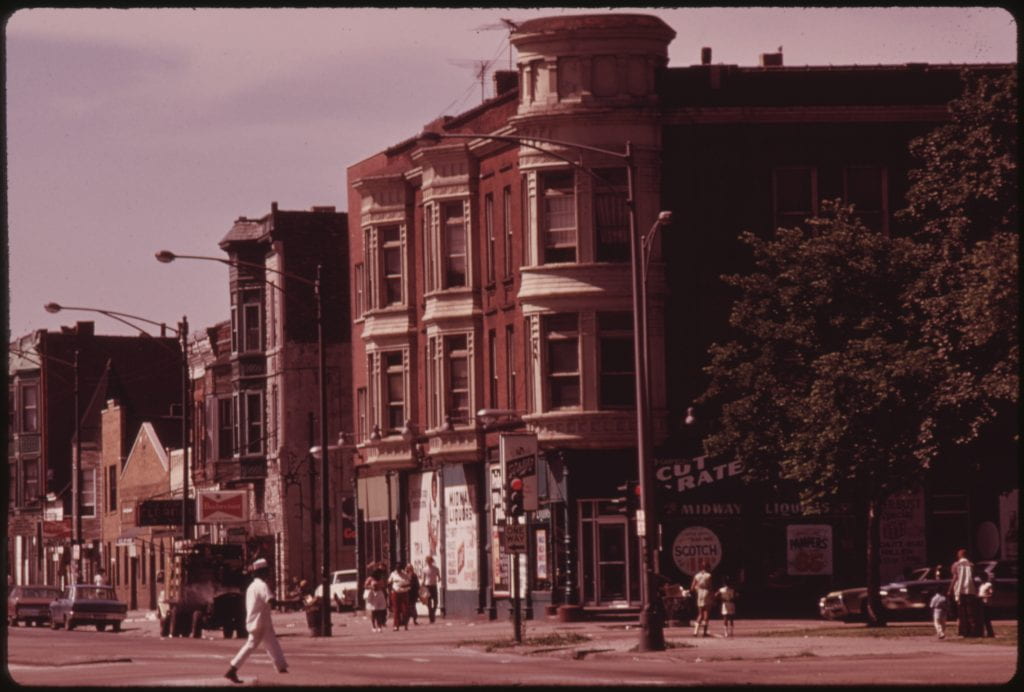by Emily Walsh

Low Income Housing (LIH) and Public Housing can have serious negative health impacts on those who need these programs the most. Unsafe living environments can be detrimental to residents’ mental and physical health. The people who utilize LIH have often exhausted all other options available to them, and only have risky situations available to them, in the form of LIH. This blog briefly highlights a few of the negative impacts resulting from the interconnection of low income and public housing.
Mobility out of these housing situations is difficult, since the average annual household income for residents of public housing is $14,511, which is well below the federal poverty line. Citizens who live in public housing disproportionately have a disability, of minority ethnicity, and/or receive social security. Whether taken as singular symptoms of a larger problem or in combination, the possibility of relocation decreases tremendously for individuals/families living below the poverty line.
The topic of the efficacy of public and LIH is not a new one. The first federal housing program was created under The U.S. Shipping Act of 1917, which aimed to provide housing for workers needed in industrial positions during World War I. These housing units championed function over comfort and health, which set a dangerous precedent for housing developments to come. Seventeen years later, the National Housing Act of 1934 sought to address housing and mortgage issues during The Great Depression. This act created many of the housing complexes still in use today, especially for lower income communities.
Low-income communities have a number of difficulties associated with them, from financial distress to lower job prospects. However, it is often easy to overlook the impact of the inadequate housing on both the physical and mental health of these populations.
Housing and Cancer
To keep costs down during the rise of cheap housing due to the National Housing Act of 1934, builders utilized asbestos. Asbestos was a common inclusion in construction materials because of its resistance to flames and chemical reactions, sounds absorption, and low cost. The low cost made asbestos a popular choice for large scale projects like schools, offices, and apartment buildings. Usage of this mineral peaked in the U.S. between 1930 and 1980. Asbestos containing materials (ACMs) become harmful once damaged, which can happen when materials get older, are exposed to weather, or are subjected to demolition or construction.
Undisturbed ACMs pose little threat, but any sort of disruption can have catastrophic consequences because there is no safe level of asbestos exposure. This disruption can be caused by construction, accidents damaging walls, water or fire damage, and general aging over time. Once disturbed, microscopic asbestos fibers are released into the air. At this point they are at risk for inhalation and ingestion by people and animals.
After they enter the body, asbestos fibers settle into the linings of internal organs including the lungs, heart and abdomen. These particles are microscopic, and rubbing against the sensitive tissue of internal organs can cause tiny nodules to form around the fibers. This irritation can cause tumors and mesothelioma cancer to develop. Symptoms such as chest pain, coughing, and fatigue are vague, and easily attributable to a number of other ailments, which makes early diagnosis very difficult.
Exposure at any point can be dangerous and lead to mesothelioma down the road, which can take up to 50 years to appear. Individuals who are worried about mesothelioma should inform their doctor of any of these symptoms, and of any possible asbestos contact. Exposure can occur from housing, construction materials, working on shipyards, working around fire retardant materials, or in mines. After diagnosis and forming a treatment plan with your doctor, you can pursue options in financial compensation if exposed on the job.
Elderly people are most at risk for mesothelioma because they have a higher likelihood of exposure to asbestos at some point in their lives. Exposing them to even more asbestos in the home can exacerbate irritation and lead to further health complications. Sixteen percent (16%) of residents in public housing are seniors, and more than half of those seniors rely on Social Security as their primary source of income. The only safe way to deal with the concern of asbestos is to hire an abatement professional to take care of the situation. However, building owners, and even the government, are not required to do so if they feel any ACMs present are in good enough repair to not be a danger to health.
Many LIH options are still owned by private property owners, which puts the cost of abatement on them. These proprietors may be loath to shell out money to abatement professionals, but they are required to maintain livable conditions on their properties, even if they aren’t specifically mandated to get rid of asbestos. For poorer individuals, the best course of action is to keep an eye around their housing, to see if anything appears to be in disrepair. If it is, they can ask their property owners to have the building tested for dangerous asbestos. If property owners refuse, they can be at risk for lawsuit for not maintaining healthy living standards.

Impacts of Housing on Wellbeing
From 1954 to 1967, the Chicago Housing Authority built more than 10,000 public housing units. However, only 63 of these were built outside of poor and racially segregated areas. In 1966, community activist Dorothy Gautreaux, along with the support of ACLU lawyers, sued the CHA in federal court. Gautreaux’s case set a precedent that there is a serious difference between urban and suburban housing. The Gautreaux Project refers to an experiment the court set up after Gautreaux won her case. The U.S. Supreme Court ordered the CHA to randomize the placement of families with Section 8 housing vouchers. Participants were placed in either suburban or urban neighborhoods regardless of race. After many years, the outcomes of these families were measured against each other.
The families placed in urban situations were more likely to have lower performing children, remain on welfare, and have lower graduation rates than the suburban participants. The Gautreaux project was hailed as definitive proof that a person’s housing situation has a strong correlation with their overall wellbeing. Sociologist James Rosenbaum testified before Congress on the Gautreaux Project’s results, which helped inspire the Moving to Opportunity (MTO) program. The MTO emulated the Gautreaux project on a larger scale with 4,600 low-income families in Baltimore, Boston, Chicago, Los Angeles, and New York City. The official MTO report found that moving to lower areas of poverty lowered risk of diabetes and obesity for women, proving that concentrated and irresponsible low-income housing is undeniably bad for health and wellbeing.
Mental Health and Housing
In 2015, the MacArthur Foundation released a report entitled The Link Between Housing, Neighborhood, and Mental Health which identified three linking factors between mental health and living situations. The study used a cross-section of 371 low-income Latino families living in the Bronx, with eligibility determined based on their income. The three factors identified in the report were housing quality, neighborhood cohesion, and policy. They found that poor housing conditions contribute to depression and hostility, but contravened by neighborhood cohesion and improvements to housing.
These issues are interconnected since social cohesion is less present in groups of people experiencing mental health issues, which can then contribute to further mental health issues and spiral out of control. A 2016 study in Britain found similar links between housing and mental health. The research concluded that when exposed to unstable housing conditions for more than a year at a time, children are three times as likely to experience depression and anxiety. Women are also more likely to develop these issues, though at a lower rate of 10 percent.
These connections are apparent, but can be difficult to measure since any mental health issue may have predated the move into low-income housing. Additionally, the effects of an unstable living situation can compound on each other.
Closing Thoughts
No matter the difficulty with which these effects are measured, the importance of responsible housing practices cannot be overstated. The biggest barrier to fixing this problem is the intricacy of the situation. Policy changes, shifts in public opinions, political attention, and development of alternatives can all stand in the way. The results of the studies cited above illustrate steps that could be taken to create a successful model of public housing. As these reports prove, an improvement in housing situations can also result in overall quality of life and contribution to society. By taking these factors into account, populations in need of housing assistance can be provided options for safe and healthy living, at the lower cost that they need.
For residents renting from a privately owned property that exhibits any of the risk factors for decreased health and well-being, you will need to prove that conditions are unlivable. To do this take documents and photographs that support your claim and force landlords to fix them or risk having rent withheld. For residents of public housing, the government is subject to the same rules, and if you are displeased, you can consider the MTO program as an alternative.
October is Healthy Lung Month. Toxins in the home can cause harm to anyone exposed. To avoid these dangerous health risks, educate yourself about how you can avoid exposure, and what your rights are. The Mesothelioma Cancer Alliance is dedicated to seeing asbestos eradicated worldwide and ending toxin pollution for people everywhere.
